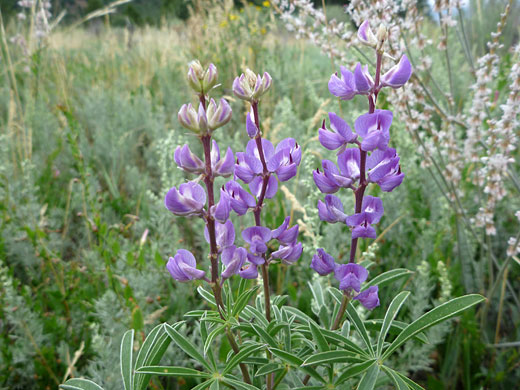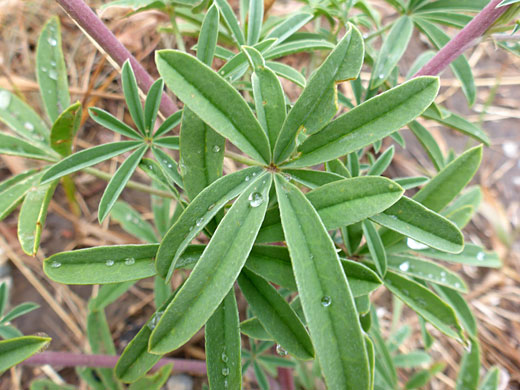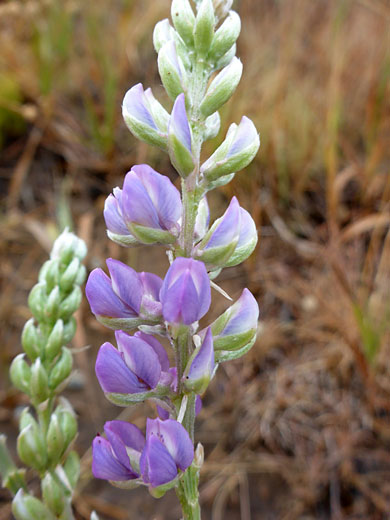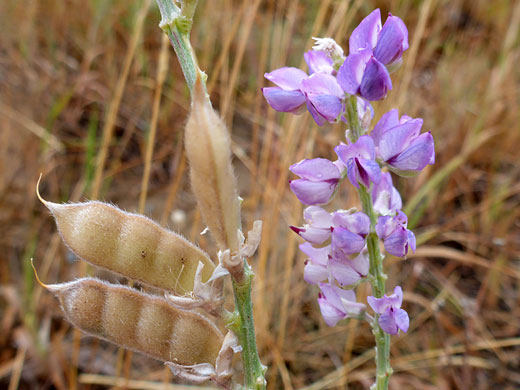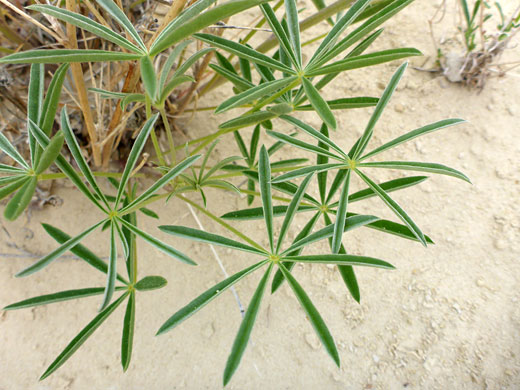Common name:
Tailcup lupine
Family:
Scientific name:
Lupinus caudatus
Main flower color:
Range:
From the Pacific states to the Rocky Mountains, and a few locations further east
Height:
Up to 2 feet
Habitat:
Dry, open slopes, grassland and woodland, between 4,000 and 8,000 feet
Leaves:
Palmate, with 5 to 9 narrow, ovate leaflets, up to 2 inches long
Season:
May to September
Lupinus caudatus spreads readily, forming low clumps several feet wide, with the reddish purple flower stems held well above the palmate leaves. Basal leaves tend to have withered when the flowers appear; the stem leaves are persistent. Like most lupines, the leaves and stem have a coating of fine, silvery hairs. Leaflets are often curved upwards along the long axis.
The flowers are borne along the upper 6 to 10 inches of the stem, and have a typical pea-like structure, with the large banner petal curving upwards and the two wings underneath, enclosing the keel. All flower parts are hairless. Petal color ranges from deep blue to purple to almost white. Fruits are hairy green pods, between 1 and 2 inches long, typically containing four seeds. Four subspecies are recognized.
The flowers are borne along the upper 6 to 10 inches of the stem, and have a typical pea-like structure, with the large banner petal curving upwards and the two wings underneath, enclosing the keel. All flower parts are hairless. Petal color ranges from deep blue to purple to almost white. Fruits are hairy green pods, between 1 and 2 inches long, typically containing four seeds. Four subspecies are recognized.
All Contents © Copyright The American Southwest | Comments and Questions | Contribute | Site Map


